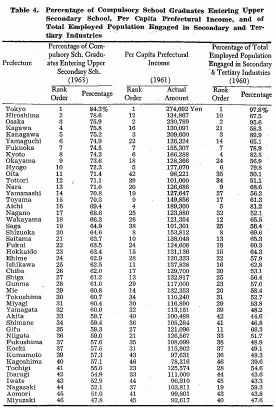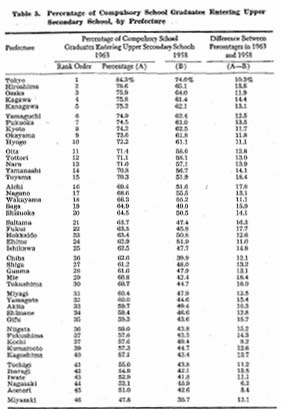| Home > Policy > White Paper, Notice, Announcement > White Paper > EDUCATIONAL STANDARDS IN JAPAN 1965 > CHAPTER1 2 (1) b | ||
The percentage of the compulsory school graduates entering upper secondary schools in Japan has as a national trend been rising continuously year after year, but the percentage varies considerably from prefecture to prefecture. These differences result from various conditions, in particular, the structure of industry, the level of inhabitants' income and interest education. Comparison of the percentages of lower secondary school graduates entering upper secondary schools among the prefectures, shows that the percentages are highest in the prefectures, such as, Tokyo, Osaka and Nara, in which secondary and tertiary industries are developed, and lowest in such prefectures as, Miyazaki, Aomori and Nagasaki, in which primary industries predominate and industrialization is less advanced- Also, the percentages are usually high in the prefectures of high average income per capita and low in prefectures of low average income per capita.


In another comparison of the percentage of compulsory school graduates entering higher schools in 1963 with that in 1958, the percentage in each prefecture has risen, without exception, for the period of five years. Further, in comparison of the differences among prefectures on these percentages in 1958 and 1963 respectively, variation coefficients of standard deviation changed from 15.8 per cent in 1958 to 12.5 per cent in 1963, indicating a sight narrowing of the difference between the prefectures during this period.
| Back to Top | MEXT HOME |